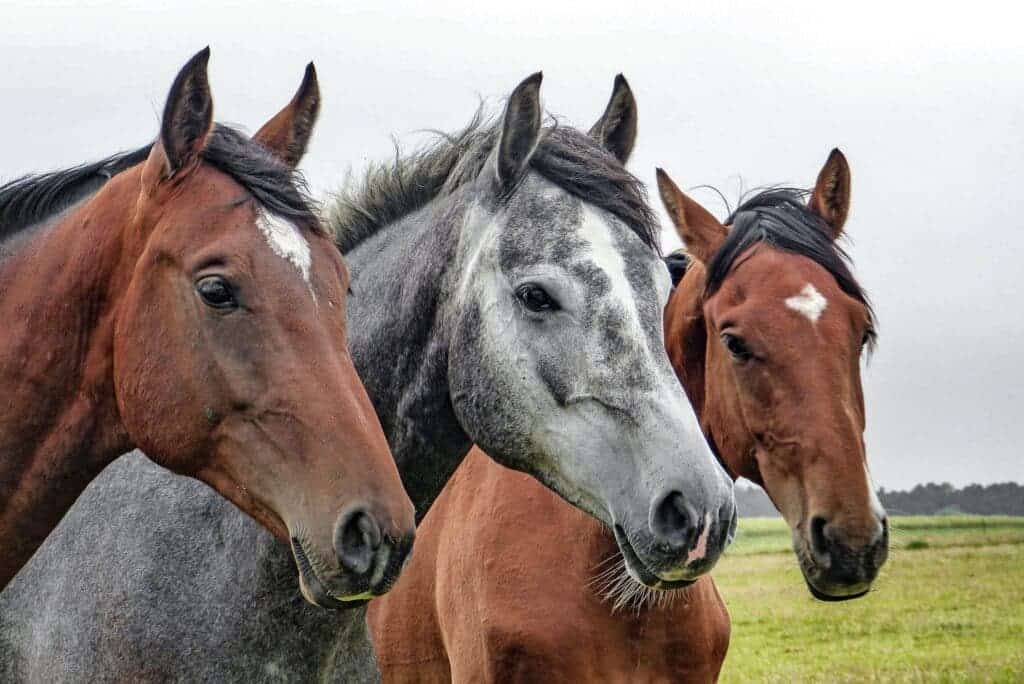
The domestication of wild horses has had a huge impact on human history, offering important advantages in terms of mobility, nutrition, and warfare, among other things. But there are still many unknowns with regards to when and where humans’ affinity for horses first began. These questions may have finally been answered by a new genetic study that traced the earliest domestication of horses to the Pontic-Caspian steppes, northern Caucasus, around 4,200 years ago.
Ludovic Orlando, a molecular archaeologist from France’s CNRS research agency in Toulouse, was among the first researchers to study the horse genome. His lab houses the world’s largest collection of wild and tamed horse DNA, some as old as 50,000 years old. This massive trove of genetic data helped him and his colleagues have a much clearer understanding of how humans shaped equine evolution. But it was only recently that Orlando and a team of more than 160 international scientists have been able to pinpoint the origin of domestic horses as we know them today.
Initially, the researchers turned their attention to Kazakhstan, where excavations of ancient Botai settlements had suggested these herders were among the first to domesticate horses. Yet although these 5,500-year-old horses from Botai showed signs of domestication, their DNA proved without a doubt that they were not the ancestors of modern domestic horses. So, the researchers moved to other possible origin spots like Anatolia, Siberia, and even the Iberian Peninsula, which each ultimately proved to be dead ends.
“We knew that the time period between 4,000 to 6,000 years ago was critical but no smoking guns could ever be found,” said Orlando in a statement.
In response, Orlando and colleagues went back to the drawing board and opted for a new strategy. They widened their net to compare the genomes of 273 horses that lived between 52,000 and 2,200 years ago.
This strategy eventually paid off, showing that horses in Eurasia suffered a dramatic change between 4,200 and 4,000 years ago. A single genetic profile, which was previously confined to the Pontic steppes of the North Caucasus, spread very fast beyond its native region, eventually replacing all the wild horse populations from the Atlantic to Mongolia in the span of only a few centuries.
“That was a chance: the horses living in Anatolia, Europe, Central Asia, and Siberia used to be genetically quite distinct,” notes Dr. Pablo Librado, first author of the study published today in the journal Nature.
“The genetic data also point to an explosive demography at the time, with no equivalent in the last 100,000 years,” Orlando added. “This is when we took control over the reproduction of the animal and produced them in astronomic numbers.”
This particular early population of domesticated horses introduced two key genomic regions (GSDMC and ZFPM1.) with desirable adaptations that made them appealing to humans. One is linked to more docile behavior, while the other helps horses develop a stronger backbone. In time, these advantageous characteristics were further selected and helped domestic horses spread from the Western Eurasian steppe.
These genetic characteristics surfaced at the same time as archaeological evidence suggests spoke-wheeled chariots and Indo-Iranian languages started to spread throughout Asia. The combination of technology and culture helped the new horse breed to replace all other previous populations across Eurasia, showing how history and science can converge to reveal
These early domestic horse ancestors suffered further important domestications. For instance, after the Arabs expanded into Europe in the 7th-century, Arabian stallions outcompeted males from other breeds, which transferred their Y chromosomes to all modern horses alive today. Today’s horses are much faster and stronger than their counterparts from 1,000 years ago, let alone those that lived 4,000 years ago. At the same time, their genetic diversity is much smaller than it ever has been, allowing more potentially deleterious mutations to accumulate and lead to a higher risk of genetic disease.



